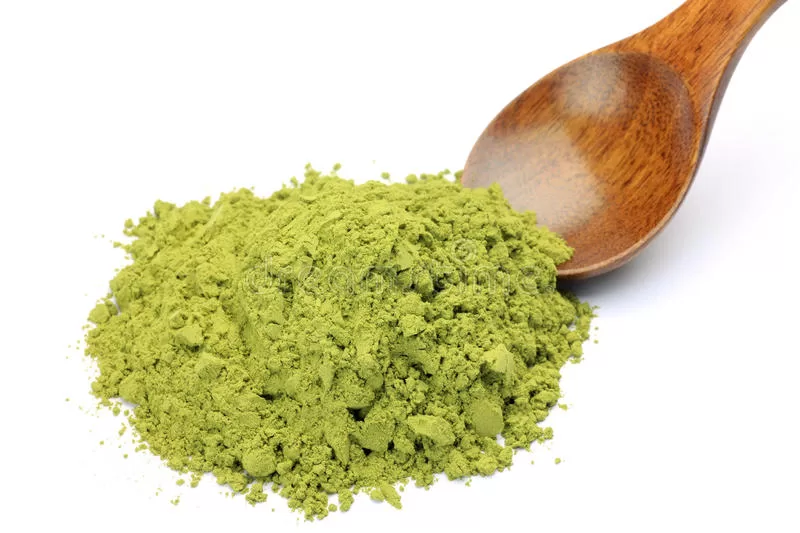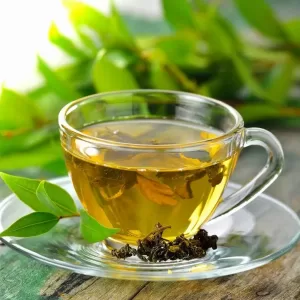The polyphenols (also called flavonoids) that have been looked at the most are procyanidins, isoflavones (genistein and daidzein), quercetin, and catechins. Berries, tea, and cocoa all include antioxidants thanks to a polyphenol called catechin, which is found in these foods.
Several types of human cancer, including colon and rectal cancers, have been linked to tea use in previous epidemiological research. Catechins are an antioxidant that is found in tea. They are antibacterial and have many uses in the digestive system.
Catechins stop the enzyme amylase from working in the small intestine, and the portal vein takes them into the body. Although catechins have been shown to kill other types of bacteria, lactic acid bacteria are immune to their effects.
What does science say?
Previous research has shown that drinking tea catechins for a few weeks can reduce the number of waste products in the body and increase the number of organic acids by lowering the pH of the intestines. Both of these effects have been linked to better health.
Animal models of cancers that are common in different organs and some more in-depth epidemiological research have shown that tea, like green tea, may be able to prevent cancer.
Green tea consumption has been linked to a reduced chance of developing breast cancer in humans, according to a number of in vivo and in vitro studies; however, the relevance of tea catechins in the treatment and prevention of breast cancer remains highly debatable.
Catechins, for instance, have been shown to prevent DNA methylation by decreasing DNMTs (DNA methyltransferases) and boosting levels of SAH (a methionine cycle intermediate), significantly reducing carcinogenesis (the formation of tumors).
Catechins have been shown to stop the growth of human cells and cause them to die naturally (apoptosis) in breast cancer cells by stopping the cell cycle. They promote cancer cell death using the body’s endogenous mechanisms, especially calcium-associated apoptosis (such as by utilizing the protein P53).

Catechins arrest cancerous cells
By controlling the activity of certain proteolytic enzymes, catechins in tea are thought to stop the spread of breast cancer cells and the development of metastases.
Lastly, catechins are a natural polyphenol that is often found in boiling tea leaves. They can be used to both lower the risk of many common adult cancers and provide a possible low-impact treatment for them.
Tea, which comes from the leaves and buds of the Camellia sinensis plant, is one of the best sources of catechins because it contains (-)-epigallocatechin-3-gallate (EGCG), a catechin with many health benefits, including anticancer, anti-obesity, anti-diabetic, anti-cardiovascular, anti-infectious, hepatoprotective, and neuroprotective effects. Tests on cells and animals, as well as a number of epidemiological and clinical studies on people, have shown that tea can help fight cancer.
People have also made guesses about how EGCG and other catechins do what they do on a chemical level. Reactive oxygen species (ROS) are implicated in one of the most alluring mechanisms. EGCG has been shown to work as both an antioxidant and a pro-oxidant when it comes to reactive oxygen species (ROS). Multiple lines of evidence point to EGCG’s ability to scavenge and increase ROS generation.
Shirakami and Shimizu gave up-to-date information on the ways that green tea catechins fight cancer, such as through anti-oxidative, pro-oxidative, and anti-inflammatory actions, immunological and epigenetic changes, and inhibition of receptor tyrosine kinase. They said that because EGCG is not easily absorbed by the body, it is not clear if the in vitro results at high concentrations can be directly used to prevent cancer in animals and people.
Catechins helpful in combating Alzheimer’s disease
Alzheimer’s disease (AD) is one of the most prevalent health problems in the world today. As a part of the pathogenic mechanism underlying AD, oxidative stress plays a role. An imbalance between reactive oxygen species (ROS) and anti-oxidant molecules may be to blame. Neuroinflammation is a possible side effect of this imbalance.
As another example, Pervin et al. gave a summary of what is known about how catechins help treat neurodegenerative diseases. A number of human studies have shown these effects to be true, but others have not. Confounding factors like the way consumption were measured, the temperature of the drink, smoking, drinking alcohol, and differences in genetic and environmental factors like race, sex, age, and lifestyle are mentioned by these authors as possible reasons for the differences. Human epidemiological studies of other diseases, including cancer, may benefit from addressing this concern.
Helps with Common Cold and Flu
Gargling with catechins from tea may protect against getting the flu, and epidemiological studies have shown that drinking green tea often reduces the number of people who get the flu and some cold symptoms. Furushima et al. looked at epidemiological and clinical studies to look at the effects of tea catechins on influenza and the common cold.
Many scientific studies have shown that the polyphenol metabolites in green, oolong, black, and dark teas, as well as EGCG and methylated EGCG in green tea, can help fight obesity. Rothenberg et al. developed the “Short Chain Fatty Acid (SCFA) Hypothesis” to explain the efficacy of different varieties of tea in inducing weight loss. SCFAs made in the gut by interactions between undigested carbs, catechins, and gut flora may have an effect on obesity by turning on AMP-activated protein kinase.
Protects Skin from Harm
Catechins have many useful effects, and one of them is that they can help stop or heal skin damage. Catechins, a key component of tea leaves, exhibit powerful antioxidant and representative physiological properties. They are polyphenol compounds, a class of chemicals that can be found in many plants used for medical purposes. Both Camellia sinensis (C. sinensis) and Camellia assumica (C. assumica) are excellent suppliers of catechins.
Catechins make up more than 75% of the polyphenol chemicals in tea leaves, which also include flavonoids, flavanones, flavanols, and phenolic acids. They have the ring structure and fundamental structure of flavan-3-ol tannins, making them condensation-type tannins.
ability to inhibit oxidation
Catechins have been shown to have antioxidant effects in numerous studies. Research has been done to improve the catechins’ stability and raise their rate of absorption in the human body. Recent research has focused on improving the efficiency of antioxidants. Catechin anti-oxidants bond covalently to chains of proteins, and both gallic acid and catechins keep their anti-oxidant activity going by making galactan.
Protection against UV Radiation
Researchers have looked into how catechins protect against UV rays for a long time and found that they can improve photostability and protect skin from UV rays. Also, studies have been done to improve the effectiveness and stability of catechins for usage in a variety of contexts, such as anti-aging skin care. Catechins make EGCG nanoethosomal suspensions more stable, which makes them more effective at protecting skin from damage caused by UVB.
Possessing properties such as anti-allergenic and anti-inflammatory

Itching and inflammation are symptoms of an allergic reaction, which is caused by an overreacting immune system. Some people develop sensitivities after coming into contact with allergens. There is evidence that catechins can reduce allergic reactions. Researchers looked into how anti-allergic oolong tea was and found that catechins stopped peritoneal mast cells from releasing histamine in rats that had been passively sensitized with an anti-egg albumin IgE antibody.
A study found that GCG, one of the catechins in tea, was the best at fighting allergens. Acerola bagasse (A. bagasse) extracts have been shown to reduce inflammation and platelet aggregation by changing the activity of proteases that are involved in coagulant, anticoagulant, and thrombolytic activities, as well as the destruction of phospholipids.
Protection from microorganisms
Scientists are looking into how to use catechins’ natural antimicrobial properties to make cosmetics that are both natural and useful. Cell-based research shows that flavan-3-ols and proanthocyanidins from Limonium brasiliense (L. brasiliense) work with gingipains to stop Porphyromonas gingivalis (P. gingivalis) from sticking to human epithelial KB cells.
Increased cellular activity
A lot of research has been done on how natural extracts, like catechins, affect the way cells work. Extracts of black, green, and white tea have been shown to stop melanogenesis in melanocytes that have been kept alive for a long time. Fermented tea leaves have significantly lower cytotoxicity and anti-melanogenic effects. A study that looked at how antioxidants and pigmentation worked showed that EGCG stopped human melanoma cells from making and releasing melanin.
Extreme amounts of catechins have been linked to adverse effects, including hepatitis. Kaleri et al. found that copper in the diet makes EGCG less harmful to the liver. This is likely because copper increases ceruloplasmin activity, which makes reactive oxygen species (ROS) go down. Catechins have many useful effects, and one of them is that they can help stop or heal skin damage.
Disclaimer: The author’s views are his or her own. The facts and opinions in the article have been taken from various articles and political commentaries available in the online media and Eastside Writers does not take any responsibility or obligation for them.
Note: Contact our Writers at www.eastsidewriters.com for writing Blogs/Articles on any niche. We have experts in various domains from Technology to Finance and from Spirituality to Lifestyle and Entertainment.







Pingback: Know The Rich Benefits Of Adding Dark Chocolate To Your Diet Routine - Eastside Writers
Pingback: Chronic Inflammation May Be Challenging- Know The Causes & Remedy
Pingback: Know The Incredible Wonders Of Ginger That It Does To Our Health - Eastside Writers
Pingback: Know The Incredible Wonders Of Ginger That It Does To Our Health
Pingback: Unlocking the Secrets of Brain Hormones: Understanding How These Powerful Chemical Messengers Regulate Your Body's Functions - Eastside Writers
Pingback: The Benefits and Risks of Lemongrass: A Comprehensive Guide - Eastside Writers
Pingback: The Deadly Truth: Smoking And Its Effects on Human Organs and Mortality - Eastside Writers